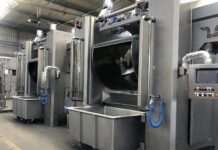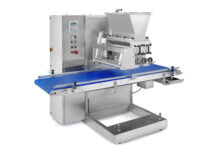 Among the many definitions of Made in Italy, the one by President of Federalimentare, Filippo Ferrua is surely the most singular, but also, and above all, the most guessed. “Made in Italy” is a mental category “. It is true, why not thinking it before. This completely changes the way of conceiving our national productions. In fact, this definition well includes many categories of products, just think about fashion. Almost all, if not all, Italian designers produce their high fashion creations in many countries other than our own. Still, no one feels to exclude them from our creative heritage. The case of foodstuff, instead, is different and it is necessary to assess it carefully and objectively. I had to face the topic several times and, often, I know I have always been rigorous in defending Italian Food, even though I have always thought, and now more than ever, that what matters is the whole, and the whole is, necessarily, the result of thought. National food, understood as, and especially, as transformation product has many components, from the choice of raw materials and their origin, to the definition of the production process and production technology, up to packaging and preservation modes. In certain circumstances, the origin of raw materials could not be Italian, but the final product will be affected by Italian character anyway. This is the case when, for example, national agricultural production is unable to meet the demand of processing industry, although the latter processes more than 70% production of the primary sector in the country. Or, it is the case of certain raw materials that are typical of other continents, such as cocoa or coffee, which in Italy are skillfully transformed into high quality products, recognized worldwide as the latest expression of “italianità”(Italian character). Therefore, the technological aspect is also one of the factors that affect, and often determine the success of “Made in Italy” in the world. Similarly, it happens that national typical products, such as pasta, pizza and conserves, are directly made in different countries than ours, simply in order to satisfy markets otherwise difficult to reach if not with unacceptable costs. In such cases, subject to strict compliance with the regulations in terms of process and technology, along with careful selection of raw materials, for obvious reasons, it may be still possible to consider them as Italian Food products if even affected by Italian spirit. Behold, then, this complex system context results in a mix that could be awkwardly imitated in terms of counterfeiting, but hardly achieved in terms not only of quality and safety, but also of taste and creativity that make Made in Italy a single thought which belongs to the genius of art, like poetry and music, painting and sculpture, of the great Italian artists, of the past and present. With this certainty, no longer matters where, but just how the work is conceived and created.
Among the many definitions of Made in Italy, the one by President of Federalimentare, Filippo Ferrua is surely the most singular, but also, and above all, the most guessed. “Made in Italy” is a mental category “. It is true, why not thinking it before. This completely changes the way of conceiving our national productions. In fact, this definition well includes many categories of products, just think about fashion. Almost all, if not all, Italian designers produce their high fashion creations in many countries other than our own. Still, no one feels to exclude them from our creative heritage. The case of foodstuff, instead, is different and it is necessary to assess it carefully and objectively. I had to face the topic several times and, often, I know I have always been rigorous in defending Italian Food, even though I have always thought, and now more than ever, that what matters is the whole, and the whole is, necessarily, the result of thought. National food, understood as, and especially, as transformation product has many components, from the choice of raw materials and their origin, to the definition of the production process and production technology, up to packaging and preservation modes. In certain circumstances, the origin of raw materials could not be Italian, but the final product will be affected by Italian character anyway. This is the case when, for example, national agricultural production is unable to meet the demand of processing industry, although the latter processes more than 70% production of the primary sector in the country. Or, it is the case of certain raw materials that are typical of other continents, such as cocoa or coffee, which in Italy are skillfully transformed into high quality products, recognized worldwide as the latest expression of “italianità”(Italian character). Therefore, the technological aspect is also one of the factors that affect, and often determine the success of “Made in Italy” in the world. Similarly, it happens that national typical products, such as pasta, pizza and conserves, are directly made in different countries than ours, simply in order to satisfy markets otherwise difficult to reach if not with unacceptable costs. In such cases, subject to strict compliance with the regulations in terms of process and technology, along with careful selection of raw materials, for obvious reasons, it may be still possible to consider them as Italian Food products if even affected by Italian spirit. Behold, then, this complex system context results in a mix that could be awkwardly imitated in terms of counterfeiting, but hardly achieved in terms not only of quality and safety, but also of taste and creativity that make Made in Italy a single thought which belongs to the genius of art, like poetry and music, painting and sculpture, of the great Italian artists, of the past and present. With this certainty, no longer matters where, but just how the work is conceived and created.



